A Closer Look: How Does Website Localization Work?
CLEAR WORDS
TRANSLATIONS
All News
September 7, 2017 |
A Closer Look: How Does Website Localization Work?
Selling in foreign countries is easier than ever, thanks to the online international market, making products and services available just one click away. But competition is tough and you need to get noticed online if you want to attract overseas customers. That’s where website localization comes in.
With 52 percent of online buyers preferring to shop from websites that speak their native language, you need website localization to convert casual visitors into buying customers. Whether you sell handmade jewelry or mobile apps, your website needs to speak local languages like a native to encourage trust.
But how does website localization work? It’s not just translating your website into new languages. Website localization involves adapting it to local standards, while still keeping a unique global brand image. It involves complex processes and a qualified team to pull off with success.
Why You Need to Speak Your Customers’ Language
Only 25.5 percent of internet users speak English as a first language. So, if you’re not ready to tailor your message for foreign audiences, you’ll lose out on a large numbers of customers.
Even as far back as 2014, KPCB found that most important global websites received more than 86 percent of their traffic from outside America. The majority of people looking for online information about specific products and services were not native English speakers.
So, if you’re thinking about taking your brand to the next level internationally, your website probably already has a sizable foreign audience. All this traffic can increase your conversion rates considerably, if you manage to make non-English internet users trust you enough to buy.
Website localization is a long term investment in your business, but it has a fairly fast ROI when done right.
How to Apply Website Localization
The first step in localizing your website is to work with the right team who has the experience and resources to pull off a seamless website localization project for you.
But whether you go about website localization in-house, or you choose an agency for the job, the same steps will apply. Let’s take a look at how website localization is typically achieved:
1. Internationalize Your Website
Internationalization (I18n) is a 18-letter long word, which may not give much away. In simple terms, it means getting your website’s code ready for website localization.
This first step consists of a series of technical changes you must perform to make your website easy to translate into various languages. The good news is that you only have to apply internationalization once. All further changes to your website will be much easier once you have an internationalized page.
This is a job for programmers who know how website localization works and it mainly covers these major elements:
- Unicode – this programming language supports almost any character and symbol, from Chinese signs to Greek letters.
- Hreflang Tags – they help Google connect your translated pages to the original website, making them more visible online.
- Flexible design – the ideal layout leaves space for languages that have more complex syntax, layout and grammar than English.
- Global-friendly colors – they help you keep your image intact in all countries, without offending any specific culture.
2. Choose Your Target Markets
Once your website is ready for localization, you need to decide which languages and countries you’re going to localize for.
Analyze potential markets and pick those where you have higher chances to sell. Your current audience can give you valuable clues about where to start your website localization from.
Conduct specific research in the target market – define your buyer persona, evaluate competitors, consider cultural issues, taxes, local laws and financial predictions.
Make a realistic plan and start with a limited number of countries first. Your goal is to reach as many customers as possible, but without spending all your cash!
3. Translate Your Content
Website localization goes way beyond word-for-word translation. You need to adapt your content, to make it easy to read by locals. They need to feel as if they’re reading a message specifically designed for them – not some weak copy of the original version.
Understand the local culture and try to fit in the best way possible. People like brands they can identify with. So, if you talk about American football in Brazil, for example, you’ll soon find yourself without an audience.
You should work with human translators and local linguists where possible, to come up with the best version of your website for each language.
Many major brands have fallen in the trap of bad translation, from KFC, to IKEA. Eventually, they managed to win over their audience once again. But we’re talking about giant companies that run million-dollar campaigns to increase brand exposure worldwide. You probably won’t have as large a budget to work with, so it’s important to get it right first time.
Focus on Curating All Your Content:
- Texts – translate all sections, forms and CTAs. Localize date and time formats, addresses, measurement units and currencies.
- Videos – whether you use subtitles or voice-overs, make sure all your videos are easy to understand by your visitors.
- Images – adapt photos to local culture, especially if they contain people or popular places. If you have texts embedded in photos, be sure to get it translated too.
4. Optimize Website Localization for Search Engines
Localize your SEO strategy to rank higher in search engine results. Find the relevant local keywords and key phrases in your niche and use them to optimize your local web content. The success of your website localization campaign depends upon your selection of the right keywords in each market.
Just imagine taking a “vacation rental” company overseas to the UK. You’re falling at an important hurdle if you don’t know that Brits look for “holiday homes” rather than vacation rentals.
Cultural gaps are quickly reflected in the way people use search engines. Don’t assume that translating your English keywords will do the job. Seek the advice of local natives on the ground to ensure you’re using the right vocabulary.
You also need to translate and optimize all meta descriptions, alt tags and anchor texts. And, last but not least, you’ll have to build back links from local websites in the language in question, as part of localizing SEO.
It’s All About Teamwork
Website localization is a complex process, which involves a mixed team of programmers, translators, linguists and marketing specialists. You’ll also have to collaborate with local marketing experts to handle cultural differences and legal issues successfully.
When approaching the international market, you need an experienced localization team that can come up with ingenious solutions for programming, design and marketing.
Software and automatic translation can’t replace human value, as machines don’t understand how website localization works. They can’t create customized marketing messages or an engaging user interface for your website. Not yet anyway!
You sell to real people, who just happen to speak a different language. Don’t expect computers to craft a message that makes real people choose you over local competitors; you’ll just waste precious resources.
The Takeaway
Website localization increases your brand exposure and helps you reach a larger number of potential customers. With a localized marketing strategy, you’ll convert your foreign visitors into clients and increase revenue tenfold.
With so many competitors already localizing for various different markets, you can’t afford to bury your head in the sand if you want to improve your market share and grow your business.
So, check your analytics, research your audience and start planning your first website localization project right away to increase brand awareness, secure higher revenues and kill the competition!










